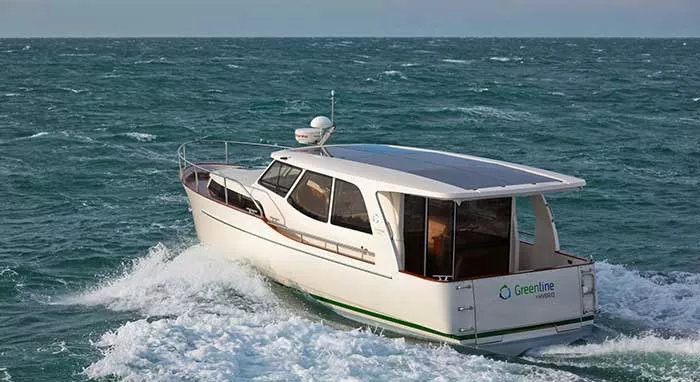Motor yachts are synonymous with luxury, adventure, and the allure of the open sea. Among these majestic vessels, the motor yacht Loon stands out as a symbol of opulence and grandeur. Measuring 221.5 feet (67.5 meters) in length, Loon offers unparalleled amenities and has been a favorite among charter guests. However, behind the scenes, changes in the crew are not uncommon. One such change was the departure of Blair, a key crew member. This article delves into the circumstances surrounding Blair’s exit from Loon, exploring the factors that led to this decision and its implications.
The Enigmatic Motor Yacht Loon
Before understanding Blair’s departure, it’s essential to grasp the significance of Loon in the yachting world. Built by Icon Yachts and delivered in 2010, Loon is a testament to luxury and design excellence. Some of her standout features include:
- Spacious Accommodations: Loon can host up to 13 guests across seven staterooms, ensuring comfort and privacy for all aboard.
- Exceptional Amenities: The yacht boasts a 25-foot (7.5 meters) aft-deck pool, one of the largest in its class, and a beach club that opens on three sides, offering panoramic ocean views.
- Advanced Features: With a range of 6,000 nautical miles at a cruising speed of 12.5 knots, Loon is equipped with two 2,480-hp MTU engines, ensuring both speed and efficiency.
These features have made Loon a sought-after charter yacht, attracting guests from around the globe.
The Role of Blair on Motor Yacht Loon
Blair served as a vital member of Loon‘s crew, contributing to the yacht’s seamless operations and the guests’ memorable experiences. While specific details about Blair’s role are limited, crew members typically undertake responsibilities ranging from navigation and maintenance to guest services and entertainment. The efficiency and success of a yacht like Loon heavily rely on the dedication and expertise of its crew, making each member’s contribution invaluable.
Reasons Behind Blair’s Departure
Crew changes on luxury yachts can result from various factors. While the exact reasons for Blair’s departure from Loon are not publicly disclosed, we can explore common scenarios that often influence such decisions:
1. Career Advancement
The yachting industry offers numerous opportunities for professional growth. Crew members frequently move between vessels to gain diverse experiences, take on more significant responsibilities, or pursue specialized training. Blair’s departure could have been motivated by a desire for career progression, seeking roles that align more closely with personal career goals.
2. Personal Commitments
Life beyond the yacht plays a crucial role in crew decisions. Personal relationships, family obligations, or the need for a more stable lifestyle can lead crew members to leave their positions. Blair might have chosen to prioritize personal matters, leading to the decision to part ways with Loon.
3. Contractual Agreements
Yacht crew positions are often bound by contractual agreements that specify the duration of service. Upon the contract’s completion, crew members may decide not to renew for various reasons, including the pursuit of new opportunities or a break from the demanding nature of yacht life.
4. Team Dynamics and Management
The internal environment aboard a yacht significantly impacts crew satisfaction. Differences in management styles, interpersonal relationships, or team dynamics can influence a crew member’s decision to leave. If challenges arose in these areas, Blair might have felt it was best to seek a new environment.
5. Health and Well-being
The demanding nature of life at sea can take a toll on one’s health. Issues related to physical or mental well-being might prompt a crew member to reconsider their position. Ensuring health and well-being is paramount, and Blair’s departure could have been a step toward addressing health concerns.
The Impact of Blair’s Departure on Motor Yacht Loon
Crew transitions, especially in key positions, can have several implications:
- Operational Continuity: A new crew member must quickly adapt to the yacht’s operations, ensuring that service standards remain unchanged. Training and orientation become crucial during such transitions.
- Guest Experience: Regular guests who are accustomed to Blair’s service might notice the change. It’s essential for the new crew to maintain the high standards that Loon is known for to ensure guest satisfaction.
- Team Cohesion: Integrating a new member into an established team requires effort. Ensuring that the crew works harmoniously is vital for the yacht’s overall success.
Conclusion
While the specific details surrounding Blair’s departure from motor yacht Loon remain undisclosed, it’s evident that such decisions are influenced by a combination of professional aspirations, personal considerations, contractual obligations, internal dynamics, and health factors. The yachting industry, known for its transient nature, often witnesses crew changes, each with its unique story. Understanding these factors provides insight into the complexities of life aboard luxury yachts and the myriad considerations that crew members navigate in their careers.

